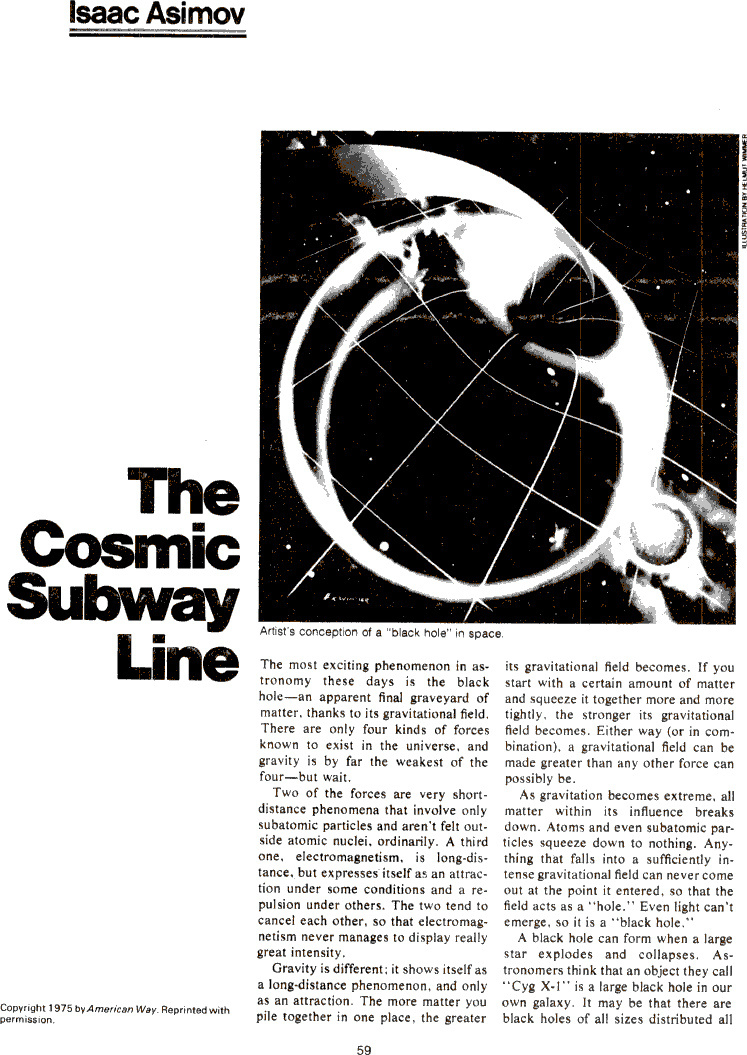by Isaac Asimov

Isaac Asimov [image] Artist's conception of a "black hole" in space. The Cosmic Subway Line The most exciting phenomenon in astronomy these days is the black hole--an apparent final graveyard of matter, thanks to its gravitational field. There are only four kinds of forces known to exist in the universe, and gravity is by far the weakest of the four--but wait. Two of the forces are very short-distance phenomena that involve only subatomic particles and aren't felt outside atomic nuclei, ordinarily. A third one, electromagnetism, is long-distance, but expresses itself as an attraction under some conditions and a repulsion under others. The two tend to cancel each other, so that electromagnetism never manages to display really great intensity. Gravity is different: it shows itself as a long-distance phenomenon, and only as an attraction. The more matter you pile together in one place, the greater its gravitational field becomes. If you start with a certain amount of matter and squeeze it together more and more tightly, the stronger its gravitational field becomes. Either way (or in combination), a gravitational field can be made greater than any other force can possibly be. As gravitation becomes extreme, all matter within its influence breaks down. Atoms and even subatomic particles squeeze down to nothing. Anything that falls into a sufficiently intense gravitational field can never come out at the point it entered, so that the field acts as a "hole." Even light can't emerge, so it is a "black hole." A black hole can form when a large star explodes and collapses. Astronomers think that an object they call "Cyg X-l" is a large black hole in our own galaxy. It may be that there are black holes of all sizes distributed all Copyright 1975 by American Way. Reprinted with permission.

